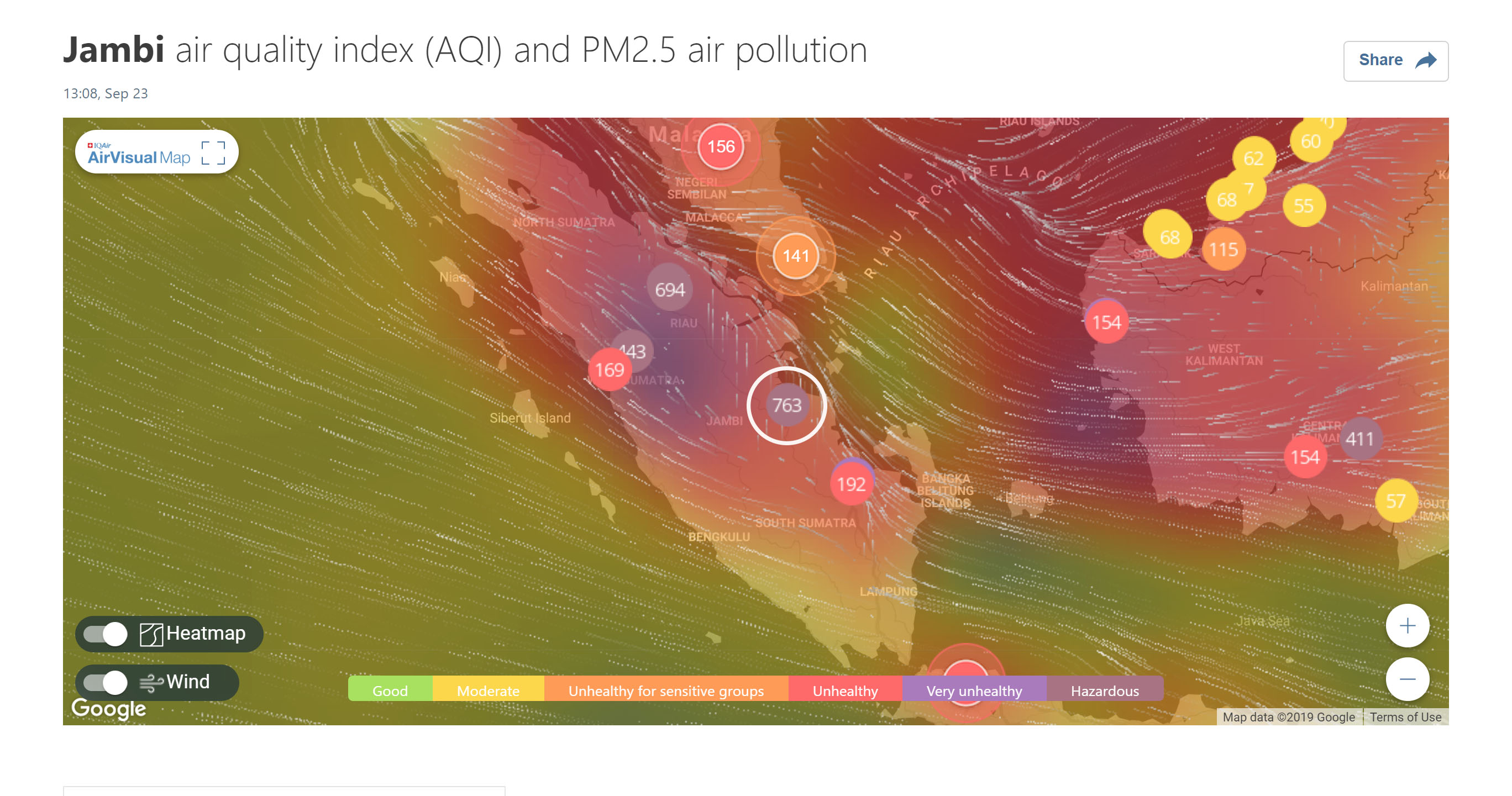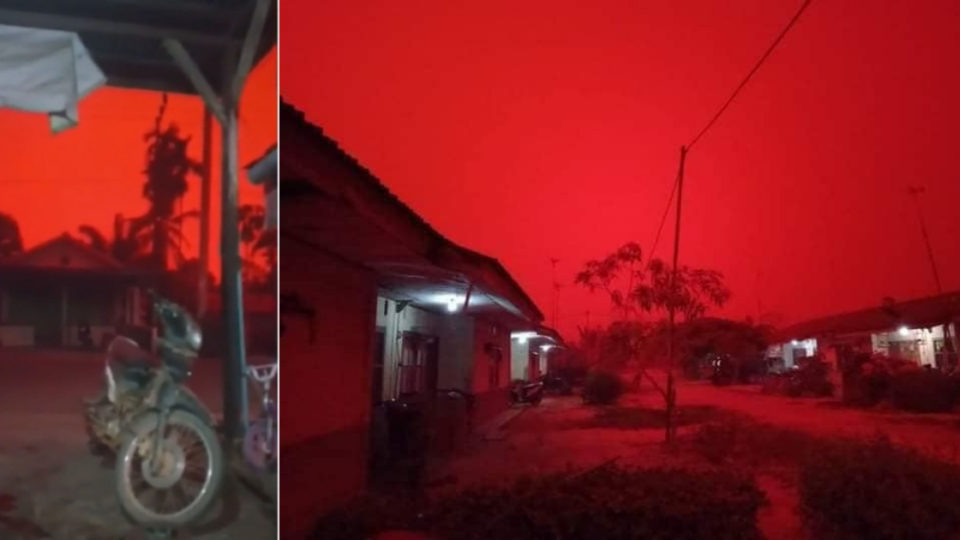While countries neighboring Indonesia — including Malaysia, Singapore and Thailand — are suffering severely from the toxic haze emitted by massive, out-of-control forest fires on the islands of Sumatra and Borneo, some of those living near the fires themselves are experiencing conditions that look straight out of a horror movie.
Over the weekend, videos and images of toxic orange and blood red skies in Jambi — a province in Central Sumatra where many haze hotspots are located — have gone viral on social media, vividly illustrating just how severe the haze truly is for those living near its source.
https://twitter.com/greatbasic/status/1175413594931904513
https://twitter.com/DukeCondet/status/1175392278690459648
https://twitter.com/kasehsaulmouk/status/1175631829417615360
As several of the tweets above mention, the videos look like they could’ve been shot on Mars. But Indonesia’s Meteorology Climatology and Geophysics Agency (BMKG) has a more terrestrial, but still quite disturbing, explanation for the phenomenon.
BMKG spokesperson Siswanto said that reports of the red sky effect were centered around the regency of Muaro Jambi. He said that imagery taken by the Himawari-8 satellite on September 21 showed the area contained numerous hot spots and extremely thick smoke distribution.
“Other areas on the satellite look brown but in Muaro Jambi they look white, which indicates that the smoke layer is extremely thick. This is likely because of land / forest fires occurring in the area, especially on peatlands,” Siswanto explained yesterday as quoted by Liputan 6.
Siswanto said the thickness of the smoke could also be seen in the high concentrations of PM10 (particulate matter 10 micrometers or less in diameter) detected in the atmosphere. On Saturday at midnight, PM10 concentration measurements around Muaro Jambi showed hazardous levels of 373.9 micrograms per cubic meter.
The BMKG spokesman said the red skies were not caused by high temperatures but because of a phenomenon known as Rayleigh scattering, which is the scattering of light or other electromagnetic radiation by particles much smaller than the wavelength of the radiation.
The high density of micro and nano-particles in the air around Muaro Jambi is filtering out the sunlight’s shorter wavelengths while allowing through longer wavelengths in the orange and red spectrum, causing the whole area appear to appear dark and red.
Based on a reading by air quality monitoring site AirVisual this morning, the AQI index in Jambi is currently at a staggering 763. Any AQI level above 300 is classified as the highest danger level, “hazardous”, with the potential to cause serious health complications to the entire population.

Haze from Indonesia — largely sparked by land-clearance fires that have grown out of control — has been choking the region for several weeks now but has escalated in severity recently, causing air pollution that several thousands schools across the region have had to shut down due to health concerns last week.
The Indonesia government has deployed an additional 5,600 officers to fire-prone regions, bringing the total number to more than 14,000. Officials are also looking to new ways to curb the difficult-to-fight fires, including the use of calcium oxide to help form clouds for potential seeding and the deployment of drones to get more real-time information on emerging hot spots.
Indonesian police say they have arrested some 230 people on suspicion of starting land-clearance fires, all of whom are facing up to 10 years in prison. Authorities have also sealed off land owned by at least 49 plantation companies in the past week for investigation after fires were found on their concessions.
Watch the Coconuts TV documentary SUMATRA BURNING below.






